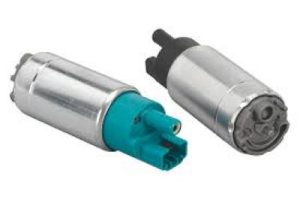The factors responsible for fuel pump seal leaks are mainly a group of elements that sum up the loss of integrity of the seals applied in fuel pumps. One primary cause is wear and tear over time. Most fuel pumps serve between 100,000 and 150,000 miles, but as they age out, the rubber seal deteriorates and loses elasticity. This often results in their cracking or, worse still, their hardening and leads to leaks. It is approximated that the percentage of seal degradation in pumps operating under very high temperatures or in unfriendly conditions may increase by 30%.
Another development that contributes to seal leakages of the fuel pump is contamination within the fuel system. particulates such as dirt, rust and debris can easily enter the fuel tank and, if not filtered out, will start to wear down the seals. Fuel filters are designed to catch these contaminants; however, when they become clogged, these particles will cause some serious damage to the pump and the seals. As it has been unveiled, even small amounts of debris can lead to early seal wear, which causes leaks and, in turn, a loss in fuel efficiency and performance.
Another cause of seal leaks is chemical reactions. Most especially, ethanol-blended fuels, common in gasoline, can wreak certain kinds of rubber seals. Ethanol invites moisture that, in turn, can cause corrosion and swelling to the said seals, leading to leaks. The Department of Energy reported that vehicles running on E85-a blend containing up to 85 percent ethanol-may experience seal failures at a much higher rate compared to conventional gasoline.

Poor installation or maintenance practice can put at risk any seal leakage. When a fuel pump is not installed in the proper way, or if the seals are not set rightly, this could increase the chance of leakage. Potential installation problems can be traced through regular inspection as part of the routine maintenance schedule and are sorted out before these become big issues. A survey amongst technicians involved in automobile repair showed that almost 25% of fuel pump failures were due to poor techniques for installation.
Another common seal stress is caused by fluctuation in fuel pressure. Fuel pumps are designed to run within a particular range of pressures. Deviation from these specified ranges can result in premature wear. Operation of the pump always at pressures more than the recommended one can lead to seal failure. Prevention of seal leaks and assurance of unit reliability call for fuel pressure to be kept at between 30 and 80 PSI.
Regular maintenance, quality fuel, and proper installation practices are included in maintaining seal leak causes in a Fuel Pump. Such preventive measures would go a long way in extending the life of the pump and preventing leaks that result in costly repairs besides the loss of fuel efficiency.